Neurobiology of the childhood adversity model and subclinical emotional parental neglect
Resumen
Introduct: Research in neurogenetics and human neurobiology, through the use of functional neuroimaging with proton emission (fMRI), we describe in an objective and analytical way, a clinical set based on neurobiology and social neurosciences, which organizes a series of situations by the individuation of objectivity and subjectivity, such as the current Syndrome Z. The most predominant neurological mechanisms are biobehaviors, all dependent on the neurological component, and develop in response to the quality of affective attention of biological parents, and present a hierarchical nosology of cumulative causal factors that were delimited from descriptive clinical practice, like all most diseases in Medicine. Methods: We present a clinical pre-diagnosis construct, based on neuropathophysiology, which was carried out in the practical field, and helps in the understanding and organized identification of a serious public health problem, and a hidden setback in family courts. It aims to contribute to the problem of NP, and its medical and specialized characterization, as well as its already known social and psychological consequences. Results: The quality of care is directly reflected in maladaptive neurological development, with deficits in emotional regulation, in intelligence and family and social skills, family synchrony and chronic states of cognition and behavior that distort the real values of mental health and the importance of interpersonal relationships (IR), Discussion: Several pieces of evidence have shown that complex PTSD or a history of childhood abuse (or both), and also in the presence of four or more situations of Adverse Emotions in Childhood (ACE), negatively impact parenting and multiple comorbidities, physical and mental, and social risk behaviors, in addition to generating "intergenerational cycles" of trauma. Conclusion: This study should be reflected upon by professionals in family law and Family Medicine, as there is no assessment and much less protective care interventions for child neurodevelopment , which is sensitive to ACEs, which determine or limit the social, mental and organic life of the child.
Descargas
Citas
2. Kepple NJ, Parker A. Examining Unique Substance-related Risk Profiles for Neglectful Behaviors among Parents with and without Clinical Depression. Child Youth Serv Rev. 2021 Jun; 125:105987. doi : 10.1016/j.childyouth.2021.105987. Epub 2021 Mar 15. PMID: 33986556; PMCID: PMC8112573.
3. Crowell JA, Keluskar J, Gorecki A. Parenting behavior and the development of children with autism spectrum disorder. Compr Psychiatry. 2019 Apr; 90:21-29. doi : 10.1016/j.comppsych.2018.11.007. Epub 2018 Nov 20. PMID: 30658339.
4. Costa AP, Steffgen G, Vögele C. The role of alexithymia in parent-child interaction and in the emotional capacity of children with autism spectrum disorder. Autism Res. 2019 Mar; 12(3):458-468. doi : 10.1002/aur.2061. Epub 2019 Jan 9 . PMID: 30624024.
5. Williams JH, Waiter GD, Gilchrist A, Perrett DI, Murray AD, Whiten A. Neural mechanisms of imitation and 'mirror neuron' function in autism spectrum disorder. Neuropsychology. 2006; 44(4):610-21. doi : 10.1016/j.neuropsychologia.2005.06.010. Epub 2005 Sep 2. PMID: 16140346.
6. Simion F, Di Giorgio E, Leo I, Bardi L. The processing of social stimuli in early infancy: from faces to the perception of biological motion. ProgBrain Res. 2011;189:173-93. doi : 10.1016/B978-0-444-53884-0.00024-5. PMID: 21489389.
7. Rajkumar RP. Biomarkers of Neurodegeneration in Post-Traumatic Stress Disorder: An Integrative Review. Biomedicines. 2023 May 17; 11(5):1465. doi : 10.3390/biomedicines11051465. PMID: 37239136; PMCID: PMC10216622.
8. McCauley DM, Sloan CJ, Xia M, Fosco GM. Same family, divergent realities: How triangulation preserves parents' illusory harmony while adolescents navigate interparental conflicts. J Fam Psychol. 2021 Mar; 35(2):128-137. doi : 10.1037/fam0000785. PMID: 33871274; PMCID: PMC8336947.
9. Rouse H, Donnelly N, Hadwin JA, Brown T. Do children with autism perceive second-order relational features? The case of the Thatcher illusion. J Child Psychological Psychiatry. 2004 Oct; 45(7):1246-57. doi : 10.1111/j.1469-7610.2004.00317.x. PMID: 15335345.
10. Simion F, Leo I, Turati C, Valenza E, Dalla Barba B. How facial specialization emerges in the first months of life. ProgBrain Res. 2007;164:169-85. doi : 10.1016/S0079-6123(07)64009-6. PMID: 17920431.
11. Ritz NL, Brocka M, Butler MI, Cowan CSM, Barrera-Bugueño C, Turkington CJR, Draper LA, Bastiaanssen TFS, Turpin V, Morales L, Campos D, Gheorghe CE, Ratsika A, Sharma V, Golubeva AV, Aburto MR, Shkoporov AN, Moloney GM, Hill C, Clarke G, SlateryDA , Dinan TG, Cryan JF. Gut microbiota associated with social anxiety disorder enhances social fear. ProcNatlAcadSci US A. 2024 Jan 2;121(1):e2308706120. doi : 10.1073/pnas.2308706120. Epub 2023 Dec 26. PMID: 38147649; PMCID: PMC10769841.
12. Antonelli-Salgado T, Ramos-Lima LF, Machado CDS, Cassidy RM, Cardoso TA, Kapczinski F, Passos IC. Neuroprogression in post-traumatic stress disorder: a systematic review. Trends Psychiatry Psychother. 2021 Jul- Sep; 43(3):167-176. doi : 10.47626/2237-6089-2020-0099. Epub 2021 Apr 16. PMID: 33872477; PMCID: PMC8638708.
13. Pavlova M, Guerreschi M, Lutzenberger W, Sokolov AN, Krägeloh-Mann I. Cortical response to social interaction affected by gender. Neuroimaging. 2010 Apr 15; 50(3):1327-32. doi : 10.1016/j.neuroimage.2009.12.096. Epub 2010 Jan 4 . PMID: 20056153.
14. Knox J. Response to 'Emotions in action through the looking glass'. J Anal Psychol. 2010 Feb; 55(1):30-4. doi : 10.1111/j.1468-5922.2009.01822.x. PMID: 20433494.
15. Rozzi S, Ferrari PF, Bonini L, Rizzolatti G, Fogassi L. Functional organization of the inferior parietal lobe convexity in the monkey: electrophysiological characterization of motor, sensory and mirror responses and their correlation with cytoarchitectonic areas. Eur J Neurosci. 2008 Oct; 28(8):1569-88. doi : 10.1111/j.1460-9568.2008.06395.x.Epub 2008 Aug 7. PMID: 18691325.
16. Bonini L, Rozzi S, Serventi FU, Simone L, Ferrari PF, Fogassi L. The ventral premotor and inferior parietal cortices contribute distinctly to the organization of action and the understanding of intention. Cerebral Cortex. 2010 Jun; 20(6):1372-85. doi : 10.1093/cercor/bhp200. Epub 2009 Oct 5. PMID: 19805419.
17. Sinigaglia C, Sparaci L. Emotions in action through the looking glass. J Anal Psychol. 2010 Feb ;55 (1):3-29. doi : 10.1111/j.1468-5922.2009.01821.x. PMID: 20433493.
18. Marchman VA, Ashland MD, Loi EC, Adams KA, Fernald A, Feldman HM. Predictors of early vocabulary growth in preterm and full-term children: A study of processing speed and medical complications. Child Neuropsychol. 2019 Oct; 25(7):943-963. doi : 10.1080/09297049.2019.1569608. Epub 2019 Feb 4. PMID: 30714476; PMCID: PMC6613975.
19. Danilov IV, Mihailova S. A New Perspective on Assessing Cognition in Children through Estimating Shared Intentionality. J Intell. 2022 Mar 29; 10(2):21. doi : 10.3390/jintelligence10020021. PMID: 35466234; PMCID: PMC9036231.
20. Blum K, McLaughlin T, Bowirrat A, Modestino EJ, Baron D, Gomez LL, Ceccanti M, Braverman ER, Thanos PK, Cadet JL, Elman I, Badgaiyan RD, Jalali R, Green R, Simpatico TA, Gupta A, Gold MS. Reward Deficiency Syndrome (RDS) Is Surprisingly Evolutionary and Found Everywhere: Is It "Blowin' in the Wind"? J Pers Med. 2022 Feb 21 ;12 (2):321. doi : 10.3390/jpm12020321. PMID: 35207809; PMCID: PMC8875142.
21. Blum K, Atzmon G, Baron D, Badgaiyan RD. Grigorenko EL, De Young CG, Eastman M, Getchell M, Haeffel GJ, Klinteberg Ba, Koposov RA, Oreland L, Pakstis AJ, Ponomarev OA, Ruchkin VV, Singh JP, Yrigollen CM. Aggressive behavior, related conduct problems, and variation in genes that affect dopamine turnover. Behaving Aggressive. 2010 May- Jun; 36(3):158-76. doi : 10.1002/ab.20339. PMID: 20127808. SOJ Psychol. 2016 Oct 17; 3(2):1-5. doi : 10.15226/2374-6874/3/2/00129. PMID: 34708151; PMCID: PMC8547313.
22. Blum K, Bowirrat A, Baron D, Lott L, Ponce JV, Brewer R, Siwicki D, Boyett B, Gondre-Lewis MC, Smith DE, Panayotis KT, Badgaiyan S, Hauser M, Fried L, AR 3rd, Downs BW, Badgaiyan RD. Biotechnical development of genetic addiction risk score (GARS) and selective evidence for inclusion of polymorphic allelic risk in substance use disorder (SUD). J Syst IntegrNeurosci. 2020 Aug ;6 (2):10.15761/JSIN.1000221. doi : 10.15761/JSIN.1000221. Epub 2019 Dec 19. PMID: 33614164; PMCID: PMC7891477.
23. Blum, Kenneth et al. “Genetic Addiction Risk Score (GARS): molecular neurogenetic evidence for predisposition to Reward Deficiency Syndrome (RDS).” Molecular neurobiology vol. 50.3 (2014): 765-96 . doi:10.1007/s12035-014-8726-5
24. Blum K, Chen TJ, Downs BW, Bowirrat A, Waite RL, Braverman ER, Madigan M, Oscar-Berman M, DiNubile N, Stice E, Giordano J, Morse S, Gold M. Neurogenetics of dopaminergic receptor supersensitivity in activation of brain reward circuitry and relapse: proposing "deprivation-amplification relapse therapy" (DART). Postgrad Med. 2009 Nov ;121 (6):176-96. doi : 10.3810/pgm.2009.11.2087. PMID: 19940429; PMCID: PMC3656125.
25. Blum K, Kazmi S, Modestino EJ, Downs BW, Bagchi D, Baron D, McLaughlin T, Green R, Jalali R, Thanos PK, Elman I, Badgaiyan RD, Bowirrat A, Gold MS. A Novel Precision Approach to Overcoming the "Addiction Pandemic" by Incorporating Genetic Addiction Risk Severity (GARS) and Dopamine Homeostasis Restoration. J Pers Med 2021 Mar 16 ;11 (3):212. doi : 10.3390/jpm11030212. PMID: 33809702; PMCID: PMC8002215.
26. Confavreux B, Vogels TP. A familiar thought: Machines that replace us? Neuron. 2022 Feb 2 ;110(3):361-362. doi : 10.1016/j.neuron.2022.01.014. PMID: 35114107.
27. Thomson G, Flacking R, George K, Feeley N, Haslund-Thomsen H, De Coen K, Schmied V, Provenzi L, Rowe J. Parents' experiences of emotional closeness with their infants in the neonatal unit: a meta-ethnography. Early Hum Dev. 2020 Oct; 149:105155. doi : 10.1016/j.earlhumdev.2020.105155. Epub 2020 Aug 14. PMID: 32829240.
28. Stevens AL, Herrenkohl TI, Mason WA, Smith GL, Klevens J, Merrick MT. Developmental effects of childhood household adversity, transitions, and relationship quality on adult outcomes of socioeconomic status: Effects of substantiated child maltreatment. Child Abuse Negl. 2018 May; 79:42-50. doi :10.1016/j.chiabu.2018.01.031. Epub 2018 Feb 6. PMID:29407855; PMCID:PMC6134210.
29. Khoury JE, Bosquet Enlow M, Plamondon A, Lyons-Ruth K. The association between adversity and hair cortisol levels in humans: A meta-analysis. Psychoneuroendocrinology. 2019 May ;103:104 -117. doi : 10.1016/j.psyneuen.2019.01.009. Epub 2019 Jan 11. PMID: 30682626; PMCID: PMC6450779.
30. Oh DL, Jerman P, Silvério Marques S, Koita K, PurewalBoparai SK, Burke Harris N, Bucci M. Systematic review of pediatric health outcomes associated with childhood adversities. BMC Pediatrics. 2018 Feb 23; 18(1):83. doi : 10.1186/s12887-018-1037-7. PMID: 29475430; PMCID: PMC5824569.
31. Yee AZ, Lwin MO, Ho SS. The influence of parenting practices on children's promotional and preventive food consumption behaviors: a systematic review and meta-analysis. Int J BehavNutr Phys Act. 2017 Apr 11 ;14 (1):47. doi : 10.1186/s12966-017-0501-3. PMID: 28399881; PMCID: PMC5387370.
32. Jaswetz L, de Voogd LD, Becker ES, Roelofs K. No evidence for disruption of reconsolidation of conditioned threat memories with a cognitively demanding intervention. Science Rep. 2022 Apr 22; 12(1):6663. doi : 10.1038/s41598-022-10184-1. PMID: 35459769; PMCID: PMC9033821.
33. Blum K, Baron D, McLaughlin T, Gold MS. Molecular neurological correlates of endorphinergic/dopaminergic mechanisms in reward circuitry linked to endorphinergic deficiency syndrome (EDS). J Neurol Sci. 2020 Apr 15; 411:116733. doi : 10.1016/j.jns.2020.116733. Epub 2020 Feb 14. PMID: 32088516.
34. Palma-Gudiel H, Córdova-Palomera A, Eixarch E, Deuschle M, Fañanás L. Maternal psychosocial stress during pregnancy alters the epigenetic signature of the glucocorticoid receptor gene promoter in their offspring: a meta-analysis. Epigenetics. 2015; 10(10):893-902. doi : 10.1080/15592294.2015.1088630. PMID: 26327302; PMCID: PMC4844196.
35. Schrott R, Song A, Ladd-Acosta C. Epigenetics as a biomarker for early-life environmental exposure. Curr Environ Health Rep. 2022 Dec ;9 (4):604-624. doi : 10.1007/s40572-022-00373-5. Epub 2022 Jul 30. PMID: 35907133.
36. Golds L, Gillespie-Smith K, Nimbley E, MacBeth A. What factors influence dyadic synchrony? A systematic review of the literature on predictors of mother-infant dyadic processes of shared behavior and affect. Infant Ment Health J. 2022 Sep ;43 (5):808-830. doi : 10.1002/imhj.22011. Epub 2022 Aug 1. PMID: 35913364; PMCID: PMC9540815.
37. Bell MA. Mother-child behavioral and physiological synchrony. Adv Child Dev Behav. 2020 ;58:163 -188. doi : 10.1016/bs.acdb.2020.01.006. Epub 2020 Jan 27. PMID: 32169195.
38. Lieberwirth C, Wang Z. The neurobiology of pair bond formation, bond disruption, and social buffering. CurrOpinNeurobiol. 2016 Oct ;40:8 -13. doi : 10.1016/j.conb.2016.05.006. Epub 2016 Jun 9. PMID: 27290660; PMCID: PMC5072360.
39. Lee TH, Miernicki ME, Telzer EH. Families that fire together smile together: Resting state connectome similarity and daily emotional synchrony in parent-child dyads. Neuroimaging. 2017 May 15 ;152:31 -37. doi : 10.1016/j.neuroimage.2017.02.078. Epub 2017 Feb 28. PMID: 28254510; PMCID: PMC5555750.
40. Endevelt-Shapira Y, Djalovski A, Dumas G, Feldman R. Maternal chemosignals enhance infant-adult brain-to-brain synchrony. Sci Adv. 2021 Dec 10 ;7 (50):eabg6867. doi : 10.1126/sciadv.abg6867. Epub 2021 Dec 10. PMID: 34890230; PMCID: PMC8664266.
41. Carollo A, Lim M, Aryadoust V, Esposito G. Interpersonal Synchrony in the Context of Caregiver-Child Interactions: A Document Co-citation Analysis. Front Psychol. 2021 Jul 28 ;12:701824 . doi : 10.3389/fpsyg.2021.701824. PMID: 34393940; PMCID: PMC8355520.
42. Leslie CE, Walsh CS, Sullivan TN. Implications of intergenerational trauma: Associations between caregiver ACEs and child internalizing symptoms in an urban African American sample. Psychol Trauma. 2023 Jul; 15(5):877-887. doi : 10.1037/tra0001334. Epub 2022 Jul 28. PMID: 35901424; PMCID: PMC10191152.
43. Lee TH, Miernicki ME, Telzer EH. Families that fire together smile together: Resting state connectome similarity and daily emotional synchrony in parent-child dyads. Neuroimaging. 2017 May 15 ;152:31 -37. doi : 10.1016/j.neuroimage.2017.02.078. Epub 2017 Feb 28. PMID: 28254510; PMCID: PMC5555750.
44. Saltzman WR, Pynoos RS, Lester P, Layne CM, Beardslee WR. Enhancing family resilience through co-construction of family narrative. Clin Child Fam Psychol Rev. 2013 Sep ;16 (3):294-310. doi : 10.1007/s10567-013-014-2. PMID: 23797387.
45. Savarimuthu A, Ponniah RJ. Receiving, Retaining, and Retrieving: Psychological and Neurobiological Perspectives on Memory Retrieval. IntegrPsycholBehaportSci . 2024 Mar; 58(1):303-318. doi : 10.1007/s12124-023-09752-5. Epub 2023 Feb 4. PMID: 36738400.
46. Gao W, Cui Z, Yu Y, Mao J, Xu J, Ji L, Kan X, Shen X, Li X, Zhu S, Hong Y. Application of a Brain-Computer Interface System with Visual and Motor Feedback in Functional Rehabilitation of Limbs and Brain after Stroke: A Case Report. Brain Science. 2022 Aug 16; 12(8):1083. doi : 10.3390/brainsci12081083. PMID: 36009146; PMCID: PMC9405856.
47. Lyons-Ruth K, Spielman E. DISORGANIZED INFANT ATTACHMENT STRATEGIES AND HELPLESS AND FEARFUL PARENTING PROFILES : INTEGRATING ATTACHMENT RESEARCH WITH CLINICAL INTERVENTION. Child Health J. 2004; 25(4):318-335. doi : 10.1002/imhj.20008. PMID: 17464363; PMCID: PMC1857278.
48. Krause AL, Colic L, Borchardt V, Li M, Strauss B, Buchheim A, Wildgruber D, Fonagy P, Nolte T, Walter M. Functional connectivity changes following interpersonal reactivity. Hum BrainMapp . 2018 Feb; 39(2):866-879. doi : 10.1002/hbm.23888. Epub 2017 Nov 21 PMID: 29164726; PMCID: PMC6866275.
49. Gunnar MR, Hostinar CE, Sanchez MM, Tottenham N, Sullivan RM. Parental buffering of fear and stress neurobiology: Reviewing parallels across rodent, monkey, and human models. Soc Neurosci. 2015; 10(5):474-8. doi : 10.1080/17470919.2015.1070198. Epub 2015 Aug 25. PMID: 26234160; PMCID: PMC5198892.
50. Chaudhary S, Zhornitsky S, Chao HH, van Dyck CH, Li CR. Emotion Processing Dysfunction in Alzheimer's Disease: An Overview of Behavioral Findings, Systems Neural Correlates, and Underlying Neural Biology. Am J Alzheimers Dis Other Demen. 2022 Jan- Dec; 37:15333175221082834. doi : 10.1177/15333175221082834. PMID: 35357236; PMCID: PMC9212074.
51. Grogans SE, Bliss-Moreau E, Buss KA, Clark LA, Fox AS, Keltner D, Cowen AS, Kim JJ, Kragel PA, MacLeod C, Mobbs D, Naragon-Gainey K, Fullana MA, Shackman AJ. The nature and neurobiology of fear and anxiety: State of the science and opportunities for accelerating discovery . Neurosci Biobehav Rev. 2023 Aug; 151:105237. doi : 10.1016/j.neubiorev.2023.105237. Epub 2023 May 18. PMID: 37209932; PMCID: PMC10330657.
52. Blum K, Chen TJ, Chen AL, Madigan M, Downs BW, Waite RL, Braverman ER, Kerner M, Bowirrat A, Giordano J, Henshaw H, Gold MS. Do dopaminergic gene polymorphisms affect mesolimbic reward activation of music listening response? Therapeutic impact on Reward Deficiency Syndrome (RDS). Med Hypotheses. 2010 Mar; 74(3):513-20. doi : 10.1016/j.mehy.2009.10.008. Epub 2009 Nov 14. PMID: 19914781.
53. Blum K, Braverman ER, Holder JM, Lubar JF, Monastra VJ, Miller D, Lubar JO, Chen TJ, Comings DE. Reward deficiency syndrome: a biogenetic model for the diagnosis and treatment of impulsive, addictive, and compulsive behaviors. J Psychoactive Drugs. 2000 Nov; 32 Suppl:i-iv, 1-112. doi : 10.1080/02791072.2000.10736099. PMID: 11280926.
54. Blum K, Sheridan PJ, Wood RC, Braverman ER, Chen TJ, Comings DE. Dopamine D2 receptor gene variants: association and linkage studies in impulsive-addictive-compulsive behavior. Pharmacogenetics. 1995 Jun; 5(3):121-41. doi : 10.1097/00008571-199506000-00001. PMID: 7550364.
55. Blum K, Chen AL, Oscar-Berman M, Chen TJ, Lubar J, White N, Lubar J, Bowirrat A, Braverman E, Schoolfield J, Waite RL, Downs BW, Madigan M, Comings DE, Davis C, Kerner MM, Knopf J, Palomo T, Giordano JJ, Morse SA, Fornari F, Barh D, Femino J, Bailey JA. Generational association studies of dopaminergic genes in reward deficiency syndrome (RDS) subjects: selecting appropriate phenotypes for reward dependence behaviors. Int J Environ Res Public Health. 2011 Dec; 8(12):4425-59. doi : 10.3390/ijerph8124425. Epub 2011 Nov 29. PMID: 22408582; PMCID: PMC3290972.
56. Blum K, Gold MS, Cadet JL, Gondre-Lewis MC, McLaughlin T, Braverman ER, Elman I, Paul Carney B, Cortese R, Abijo T, Bagchi D, Giordano J, Dennen CA, Baron D, Thanos PK, Soni D , Makale MT, Makale M, Murphy KT, Jafari N, Sunder K, Zeine F, Ceccanti M, Bowirrat A, Badgaiyan RD. Invited Expert Opinion- Bioinformatics and Limitation Directives to Help Adopt Genetic Addiction Risk Screening and Identify Preaddictive Reward Dysregulation: Required Analytic Evidence to Induce Dopamine Homeostatsis. Med Res Arch. 2023 Sep 14; 11(8):10.18103/mra.v11i8.4211. doi : 10.18103/mra.v11i8.4211. PMID: 37885438; PMCID: PMC10601302.
57. Nieuwenhuys R. The myeloarchitectonic studies on the human cerebral cortex of the Vogt-Vogt school and their significance for the interpretation of functional neuroimaging data. Brain Structure Function. 2013 Mar; 218(2):303-52. doi : 10.1007/s00429-012-0460-z. Epub 2012 Oct 18. PMID: 23076375.
58. Pavlova M. Perception and understanding of intentions and actions: does gender matter? NeurosciLett . 2009 Jan 9 ;449(2):133-6. doi : 10.1016/j.neulet.2008.10.102. Epub 2008 Nov 5. PMID: 19007857.
59. Pavlova M, Sokolov AN, Birbaumer N, Krägeloh-Mann I. Perception and understanding of others' actions and brain connectivity. J CognNeurosci . 2008 Mar; 20(3):494-504. doi : 10.1162/jocn.2008.20034. PMID: 18004956.
60. Pavlova MA, Krägeloh-Mann I. Limitations in preterm brain development: impact of periventricular white matter lesions on brain connectivity and cognition. Brain. 2013 Apr; 136(Pt 4):998-1011. doi : 10.1093/brain/aws334. PMID: 23550112.
61. Pavlova M, Sokolov A, Krägeloh-Mann I. Visual navigation in adolescents with early periventricular lesions: knowing where but not getting there. Cerebral Cortex. 2007 Feb; 17(2):363-9. doi : 10.1093/cercor/bhj153. Epub 2006 Mar 8. PMID: 16525128.
62. Marchman VA, Ashland MD, Loi EC, Munevar M, Shannon KA, Fernald A, Feldman HM. Associations between early language processing efficiency and cognitive and language outcomes in term and preterm children: Similarities and differences. NeuropsycholInfantil . 2023 Aug; 29(6):886-905. doi : 10.1080/09297049.2022.2138304 . Epub 2022 Nov 2. PMID: 36324057; PMCID: PMC10151433.
63. Pavlova M, Sokolov AN, Krägeloh-Mann I. Arithmetic and brain connectivity: mental calculation in adolescents with periventricular lesions. Neuropsychology. 2009 Jan; 47(2):439-45. doi : 10.1016/j.neuropsychologia.2008.09.014. Epub 2008 Sep 25. PMID: 18929585.
64. Herpertz SC, Bertsch K, Jeung H. Neurobiology of Criterion A: self and interpersonal personality functioning. Curr Opin Psychol. 2018 Jun; 21:23-27. doi : 10.016/j.copsyc.2017.08.032. Epub 2017 Sep 9 . PMID: 28946053.
65. Samuel G. The contemporary mindfulness movement and the question of not-self1. Transculta Psychiatry. 2015 Aug; 52(4):485-500. doi : 10.1177/1363461514562061. Epub 2014 Dec 5. PMID: 25480489.
66. Panaïoti A. Mindfulness and personal identity in the Western cultural context: A call for greater cosmopolitanism. Transculta Psychiatry. 2015 Aug; 52(4):501-23. doi : 10.1177/1363461515573106. Epub 2015 Mar 12. PMID: 25765440.
67. Doehrmann O, Ghosh SS, Polli FE, Reynolds GO, Horn F, Keshavan A, Triantafyllou C, Saygin ZM, Whitfield-Gabrieli S, Hofmann SG, Pollack M, Gabrieli JD. Predicting treatment response in social anxiety disorder from functional magnetic resonance imaging. JAMA Psychiatry. 2013 Jan; 70(1):87-97. doi : 10.1001/2013.jamapsychiatry.5. PMID: 22945462; PMCID: PMC3844518.
68. Bonini L, Rozzi S, Serventi FU, Simone L, Ferrari PF, Fogassi L. The ventral premotor and inferior parietal cortices contribute distinctly to the organization of action and the understanding of intention. Cerebral Cortex. 2010 Jun; 20(6): 1372-85. doi : 10.1093/cercor/bhp200. Epub 2009 Oct 5. PMID: 19805419.
69. Uylings HB, Rajkowska G, Sanz-Arigita E, Amunts K, Zilles K. Consequences of large interindividual variability for human brain atlases: convergent macroscopic imaging and microscopic neuroanatomy. AnatEmbryol (Berl). 2005 Dec ;210 (5-6):423-31. doi : 10.1007/s00429-005-0042-4. PMID: 16180019.
70. Bonnel A, Mottron L, Peretz I, Trudel M, Gallun E, Bonnel AM. Enhanced tone sensitivity in individuals with autism: a signal detection analysis. J CognNeurosci . 2003 Feb 15; 15(2):226-35. doi :10.1162/089892903321208169. PMID:12676060.
71. Márquez C, Poirier GL, Cordero MI, Larsen MH, Groner A, Marquis J, Magistretti PJ, Trono D, Sandi C. Peripubertal stress leads to abnormal aggression, altered amygdala and orbitofrontal reactivity, and increased prefrontal MAOA gene expression. Psychiatry Transl. 2013 Jan 15; 3(1):e216. doi : 10.1038/tp.2012.144. PMID: 23321813; PMCID: PMC3566724.
72. Thomson G, Flacking R, George K, Feeley N, Haslund-Thomsen H, De Coen K, Schmied V, Provenzi L, Rowe J. Parents' experiences of emotional closeness with their infants in the neonatal unit: a meta-ethnography. Early Hum Dev. 2020 Oct; 149:105155. doi : 10.1016/j.earlhumdev.2020.105155. Epub 2020 Aug 14. PMID: 32829240.
73. Stevens AL, Herrenkohl TI, Mason WA, Smith GL, Klevens J, Merrick MT. Developmental effects of childhood household adversity, transitions, and relationship quality on adult outcomes of socioeconomic status: Effects of substantiated child maltreatment. Child Abuse Negl. 2018 May; 79:42-50. doi :10.1016/j.chiabu.2018.01.031. Epub 2018 Feb 6. PMID:29407855; PMCID:PMC6134210.
74. Khoury JE, Bosquet Enlow M, Plamondon A, Lyons-Ruth K. The association between adversity and hair cortisol levels in humans: A meta-analysis. Psychoneuroendocrinology. 2019 May ;103:104 -117. doi : 10.1016/j.psyneuen.2019.01.009. Epub 2019 Jan 11. PMID: 30682626; PMCID: PMC6450779.
75. Oh DL, Jerman P, Silvério Marques S, Koita K, PurewalBoparai SK, Burke Harris N, Bucci M. Systematic review of pediatric health outcomes associated with childhood adversities. BMC Pediatrics. 2018 Feb 23; 18(1):83. doi : 10.1186/s12887-018-1037-7. PMID: 29475430; PMCID: PMC5824569.
76. Yee AZ, Lwin MO, Ho SS. The influence of parenting practices on children's promotional and preventive food consumption behaviors: a systematic review and meta-analysis. Int J BehavNutr Phys Act. 2017 Apr 11 ;14 (1):47. doi : 10.1186/s12966-017-0501-3. PMID: 28399881; PMCID: PMC5387370.
77. Jaswetz L, de Voogd LD, Becker ES, Roelofs K. No evidence for disruption of reconsolidation of conditioned threat memories with a cognitively demanding intervention. Science Rep. 2022 Apr 22; 12(1):6663. doi : 10.1038/s41598-022-10184-1. PMID: 35459769; PMCID: PMC9033821.
78. Cirillo A, Diniz E, Gadelha A, Asevedo E, Axelrud LK, Miguel EC, Rohde LA, Bressan RA, Pan P, Mari JJ. Population neuroscience: challenges and opportunities for psychiatric research in low- and middle-income countries. Psychiatry Braz J. 2020 Aug; 42(4):442-448. doi : 10.1590/1516-4446-2019-0761. Epub 2020 Apr 3. PMID: 32267341; PMCID: PMC7430393.
79. Anker JJ, Kushner MG. Alcohol Use Disorder and Anxiety: Connecting Psychiatric, Psychological, and Neurobiological Perspectives. Alcohol Res. 2019 Dec 30 ; 40(1):arcr.v40.1.03. doi : 10.35946/arcr.v40.1.03. PMID: 31886106; PMCID: PMC6927748.
80. 2020 Mar 18 ; 10(3):173. doi : 10.3390/brainsci10030173. PMID: 32197333; PMCID: PMC7139956.
81. Ceban F, Ling S, Lui LMW, Lee Y, Gill H, Teopiz KM, Rodrigues NB, Subramaniapillai M, Di Vincenzo JD, Cao B, Lin K, Mansur RB, Ho RC, Rosenblat JD, Miskowiak KW, Vinberg M, Maletic V, McIntyre RS. Fatigue and cognitive impairment in post-COVID-19 syndrome: A systematic review and meta-analysis. Brain Behavior Immune. 2022 Mar; 101:93-135. doi : 10.1016/j.bbi.2021.12.020. Epub 2021 Dec 29. PMID: 34973396; PMCID: PMC8715665.
82. Turkish Association for Child and Adolescent Psychiatry, 2020 ). r J Psychol Med. 2020 Sep;37(3):222-225. doi : 10.1017/ipm.2020.57. Epub 2020 May 21. PMID: 32434621; PMCID: PMC7276500.
83. Geugies H, Mocking RJT, Figueroa CA, Groot PFC, Marsman JC, Servaas MN, Steele JD, Schene AH, Ruhé HG. Impaired reward-related learning cues in non-medicated remitted patients with recurrent depression. Brain. 2019 Aug 1; 142(8):2510-2522. doi : 10.1093/brain/awz167. PMID: 31280309; PMCID: PMC6734943.
84. Hornor G. Attachment disorders. J Pediatr Health Care. 2019 Sep-Oct ;33 (5):612-622. doi : 10.1016/j.pedhc.2019.04.017. Erratum in: J Pediatr Health Care. 2020 Jan - Feb ;34 (1):82. PMID: 31447013.
85. Bellis MA, Hughes K, Ford K, Ramos Rodriguez G, Sethi D, Passmore J. Life course health consequences and associated annual costs of adverse childhood experiences across Europe and North America: a systematic review and meta-analysis. Lancet Public Health. 2019 Oct ;4 (10):e517-e528. doi : 10.1016/S2468-2667(19)30145-8. Epub 2019 Sep 3. PMID: 31492648; PMCID: PMC7098477.
86. Tough H, Siegrist J, Fekete C. Social relationships, mental health and wellbeing in physical disability: a systematic review. BMC Public Health. 2017 May 8 ;17 (1):414. doi : 10.1186/s12889-017-4308-6. Erratum in: BMC Public Health. 2017 Jun 16 ;17 (1)580. PMID: 28482878; PMCID: PMC5422915.
87. Yee AZ, Lwin MO, Ho SS. The influence of parenting practices on children's promotional and preventive food consumption behaviors: a systematic review and meta-analysis. Int J BehavNutr Phys Act. 2017 Apr 11 ;14 (1):47. doi : 10.1186/s12966-017-0501-3. PMID: 28399881; PMCID: PMC5387370.
88. Mah BL. Oxytocin, Postnatal Depression, and Parenting: A Systematic Review. Harv Rev Psychiatry. 2016 Jan-Feb ;24 (1):1-13. doi : 10.1097/HRP.00000000000000093. PMID: 26735320 .
89. Ciuffo ICG, LandoniM,.Parent–Infant Skin-to-Skin Contact and Stress Regulation: A Systematic Review of the Literature
90. Bellis MA, Hughes K, Ford K, Ramos Rodriguez G, Sethi D, Passmore J. Life course health consequences and associated annual costs of adverse childhood experiences across Europe and North America: a systematic review and meta-analysis. Lancet Public Health. 2019 Oct ;4 (10):e517-e528. doi : 10.1016/S2468-2667(19)30145-8. Epub 2019 Sep 3. PMID: 31492648; PMCID: PMC7098477.
91. Warner TD, Leban L, Pester DA, Walker JT. Contextualizing Adverse Childhood Experiences: The Intersections of Individual and Community Adversity. J Youth Adolescence. 2023 Mar; 52(3):570-584. doi : 10.1007/s10964-022-01713-2. Epub 2022 Nov 29. PMID: 36445650.
92. Leisman G, Machado C, Melillo R, Mualem R. Intentionality and "free-will" from a neurodevelopmental perspective. Front Integration Neurosci. 2012 Jun 27; 6:36. doi : 10.3389/fnint.2012.00036. PMID: 22754510; PMCID: PMC3385506.
93. Hong MY, Lee SW, Kim EY. Relationship of Momentary Volition to Occupational Experience and Life Perspective in Undergraduate Students. Healthcare (Basel). 2023 Sep 5 ;11(18):2471. doi : 10.3390/healthcare11182471. PMID: 37761668; PMCID: PMC10530513.
94. Ong HS, Fernandez PA, Lim HK. Family engagement as part of managing patients with mental illness in primary care. Singapore Med J. 2021 May ;62 (5):213-219. doi : 10.11622/smedj.2021057. PMID: 34409463; PMCID: PMC8801858.
95. Schladitz K, Weitzel EC, Löbner M, Soltmann B, Jessen F, Schmitt J, Pfennig A, Riedel-Heller SG, Gühne U. Demands on Health Information and Clinical Practice Guidelines for Patients from the Perspective of Adults with Mental Illness and Family Members : A Qualitative Study with In-Depth Interviews. Int J Environ Res Public Health. 2022 Nov 1 ;19 (21):14262. doi : 10.3390/ijerph192114262. PMID: 36361142; PMCID: PMC9659184.
96. Blair C, Raver CC. Child development in the context of adversity: experiential channeling of brain and behavior. Am Psychol. 2012 May-Jun ;67 (4):309-18. doi : 10.1037/a0027493. Epub 2012 Mar 5. PMID: 22390355 ;PMCID : PMC5264526.
97. Bates RA, Militello L, Barker E, Villasanti HG, Schmeer K. Early childhood stress responses to psychosocial stressors: The state of the science. Dev Psychobiol. 2022 Nov ;64 (7):e22320. doi : 10.1002/dev.22320. PMID: 36282746; PMCID: PMC9543576.
98. Garvin MM, Bolton JL. Sex-specific behavioral outcomes of early-life adversity and emerging microglia-dependent mechanisms. Front BehavNeurosci . 2022 Oct 4 ;16:1013865. doi : 10.3389/fnbeh.2022.1013865. PMID: 36268470; PMCID: PMC9577368.
99. Aguilera M, Arias B, Wichers M, Barrantes-Vidal N, Moya J, Villa H, van Os J, Ibáñez MI, Ruipérez MA, Ortet G, Fañanás L. Early adversity and 5-HTT/BDNF genes: new evidence for gene-environment interactions in depressive symptoms in a general population. Psychol Med. 2009 Sep; 39(9):1425-32. doi : 10.1017/S0033291709005248. Epub 2009 Feb 12. PMID: 19215635.
100. Murthy BKB, Somatakis S, Ulivi AF, Klimmt H, Castello-Waldow TP, Haynes N, Huettl RE, Chen A, Attardo A. Arc-driven mGRASP highlights CA1 to CA3 synaptic engrams. Front Behavior Neurosci. 2023 Jan 30; 16:1072571. doi : 10.3389/fnbeh.2022.1072571. PMID: 36793796; PMCID: PMC9924068.
101. Gastaldi C, Schwalger T, De Falco E, Quiroga RQ, Gerstner W. When shared concept cells support associations: Theory of overlapping memory engrams. PLoS Comput Biol. 2021 Dec 30;17(12):e1009691. doi : 10.1371/journal.pcbi.1009691. PMID: 34968383; PMCID: PMC8754331.
102. Cui Y, Liu Y, Yang C, Cui C, Jing D, Zhang X, Chen Y, Li B, Liang Z, Chen K, Zhang Z, Wu L. Brain structural and functional anomalies associated with simultanagnosia in patients with posterior cortical atrophy . Brain Imaging Behavior. 2022 Jun; 16(3):1148-1162. doi : 10.1007/s11682-021-00568-8. Epub 2021 Nov 17. PMID: 34787788; PMCID: PMC9107404.
103. Darby, R. R., Edersheim, J. , & Price, B. H. (2016). What patients with behavioral variant frontotemporal dementia can teach us about moral responsibility. AJOB Neuroscience , 7 (4), 193–201.
104. Skipper JI. A voice without a mouth no more: The neurobiology of language and consciousness. NeurosciBiobehav Rev. 2022 Sep ;140:104772 . doi : 10.1016/j.neubiorev.2022.104772 . Epub 2022 Jul 11. PMID: 35835286.
105. Karim AKMR, Proulx MJ, de Sousa AA, Likova LT. Do we enjoy what we sense and perceive? A dissociation between aesthetic appreciation and basic perception of environmental objects or events. Cogn Affect Behav Neurosci. 2022 Oct; 22(5):904-951. doi : 10.3758/s13415-022-01004-0. Epub 2022 May 19. PMID: 35589909; PMCID: PMC10159614.
106. Furlanetto MLJr.(2023). Dialectical Medicina: Syndrome Z and Use of Pathological Substances. J. Integrated Health. 2(1),1-20 2 ISSN:2583-5386
107. Furlanetto M.L.Jr.(2023). Clinical Neurogenetics of syndrome Z and Scientific Evidence Based Clinical Evaluation. J Health Integrated. 2(1), 21-25.DOI: http//: doi.org/10.51219/JIH/Furlanetto-M-L-Jr/5
108. Furlanetto M.L.Jr(2023). Stakehold ZXSY Brazil,Precision Mediicine in Pediatric Clinic: Reward Deficiency Syndrome (RDS)is surprisingly Evolving and Found Everywhere: Is It ´´lowing in the Wind? Yes, but how Syndrome Z.J. Integrated Health,2(2),26-38.DOI:doi.org/10.51219/JIH/Furlanetto-M-L-Jr-6
109. Ivan T., et al (2023).Precision Medicine in Pediatrics: Infantile Z Syndrome, Familial Sync Neurological Deficit, ANAAS Syndrome, Zoé Syndrome, RDS Spectrum Disorder. J Medical Case Repo, 5(2):1-15.
110. M. L. Furlanetto Junior (2023). Stakehold ZXSY: Disorder Deficit Familial Asynchrony and Syndrome Z. J Medical Case Repo, 5(1):1-24. DOI: https://doi.org/10.47485/2767-5416.1032
111. Detrigiachi E, Sukorski JP, de Oliveira MTM, Lima LA,Furlanetto Junior ML (2023):Medicine,Law and Collective Mental Health:New Therapeutic for pré- parental and Pré-addiction.J.Integrated Health20223;2(4)91-99.DOI:doi.org/10.51219/Mario-Luiz-16
112. Luiz Furlanetto Junior et al.Diagnostic Methodologic and Prevention on Internal Medicine and common Neurobehavior:Target of prevention of cardiovascular events and Metabolic syndrome. Cardiol Arch 2023; 1(1):5-11.
Derechos de autor 2025 Fabiano de Abreu Agrela Rodrigues , Adriel Pereira da Silva

Esta obra está bajo licencia internacional Creative Commons Reconocimiento 4.0.

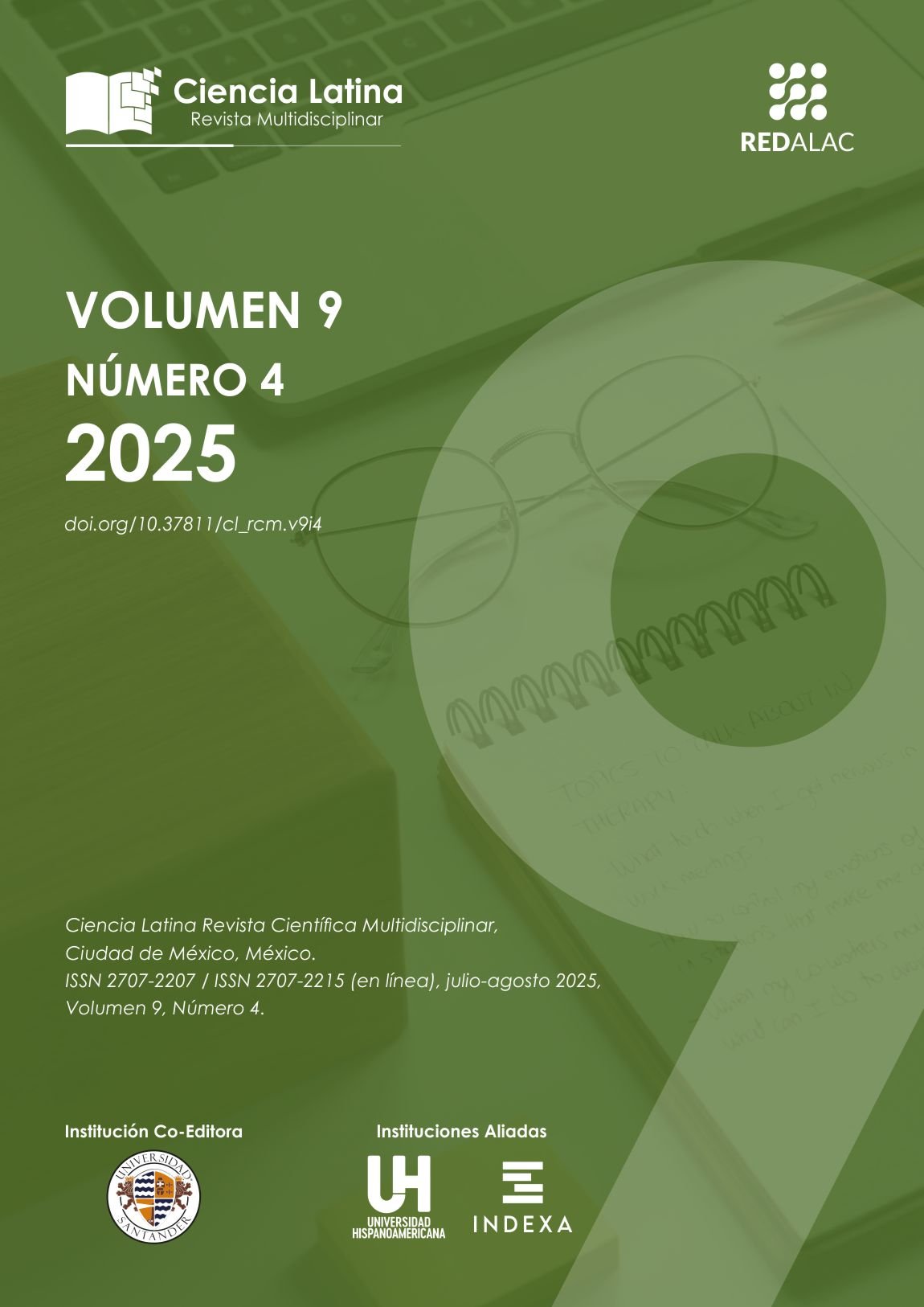
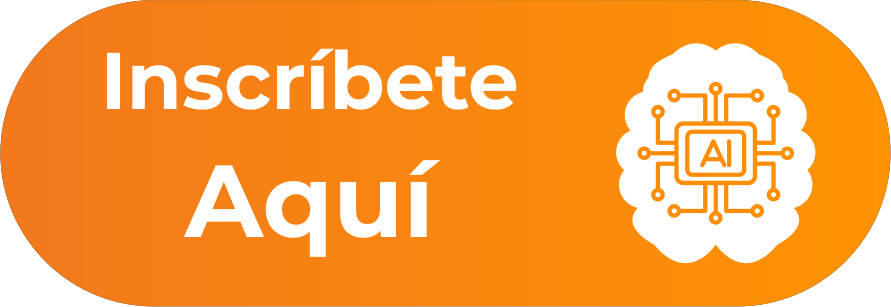









.png)










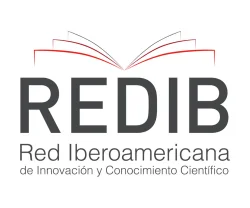



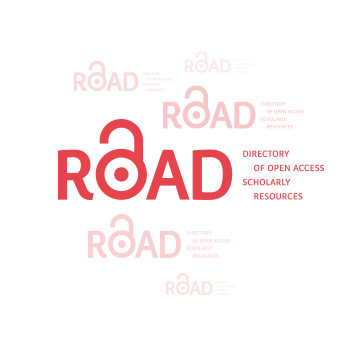

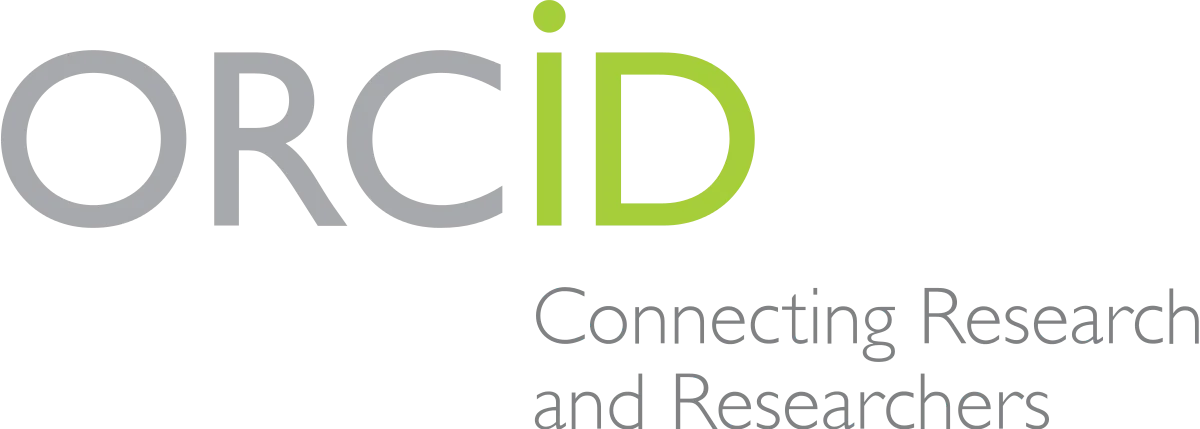



.png)
1.png)


